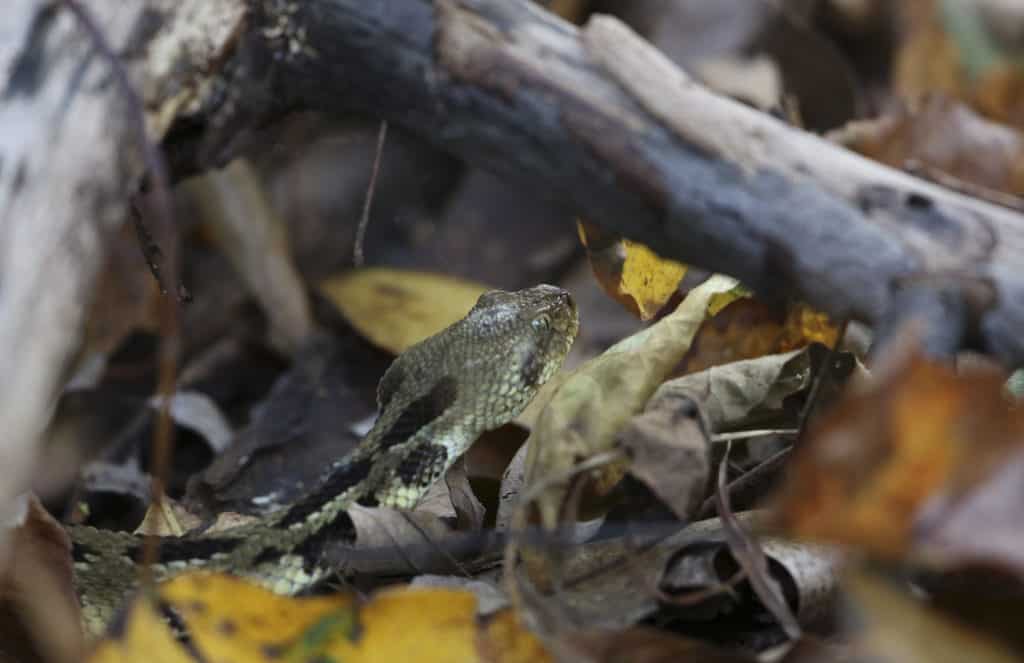Creature Feature

Tread Carefully in Timber Territory
By Wayne Bierbaum
Catoctin State Park is a rocky wooded park near Thurmont, Md. This beautiful and popular park has many hiking trails with rock outcrops, overlooks and waterfalls. It is also home to a large population of timber rattlesnakes. Luckily, they are fairly calm and rarely seen.
Timber rattlesnakes (Crotalus horridus) are one of the two poisonous snake species found in Maryland, the other being the copperhead. Both snakes are pit vipers, with heat-sensing organs called pits near their nostrils. Both snakes have vertical pupils which differ from all of Maryland’s non-poisonous snakes, which have circular pupils.
The timber rattlesnake is a large snake, commonly found in the 4-foot range with the largest specimen reaching 72 inches. Surprisingly, males are larger than females. Timbers have a banded or blotchy brown pattern, keeled scales, a triangular head and rattles on their tails. The rattles are made of keratin that forms with each shedding in a loosely interlocking hollow structure. Losing the tip of the rattle is painless for the snake and large snakes rarely have a complete rattle. They grow slowly and have a very long lifespan of 30 or more years.
In the fall, timber rattlesnakes may travel far to locate underground wintering dens. The dens will hold 20 or more snakes. In the spring, they separate and head back to their hunting grounds. Their hunting range can be over a mile as they look for mice and ground squirrels. In the late spring, males will follow the female’s scent trail for mating. After mating, up to 20 young will be born from eggs that developed within the female. The young are born with venom and fangs.
Unlike the nervous and angry copperhead, timber rattlesnakes are known to be calm and fairly passive. They will bite when bothered, startled or stepped on. Their toxin is both a hemotoxin and neurotoxin. It causes intense blood clotting and nerve injury which causes pain and can paralyze muscles. Antitoxin is available and rapid transportation for treatment is needed. The snakes can control how much toxin they inject and, if you are lucky, sometimes don’t inject any toxin at all, sometimes called a dry bite.
Timber rattlesnakes are found all along the Eastern U.S. from northern Florida to Canada and west to Texas and Nebraska. In Maryland, they are found in hilly and rock areas and are present but uncommon in Anne Arundel County. However, they are losing habitat and their numbers have been declining. Timber rattlesnakes are protected as a threatened or vulnerable species in state and national parks.
Always watch where you are stepping and if you see a snake, give it plenty of space.
